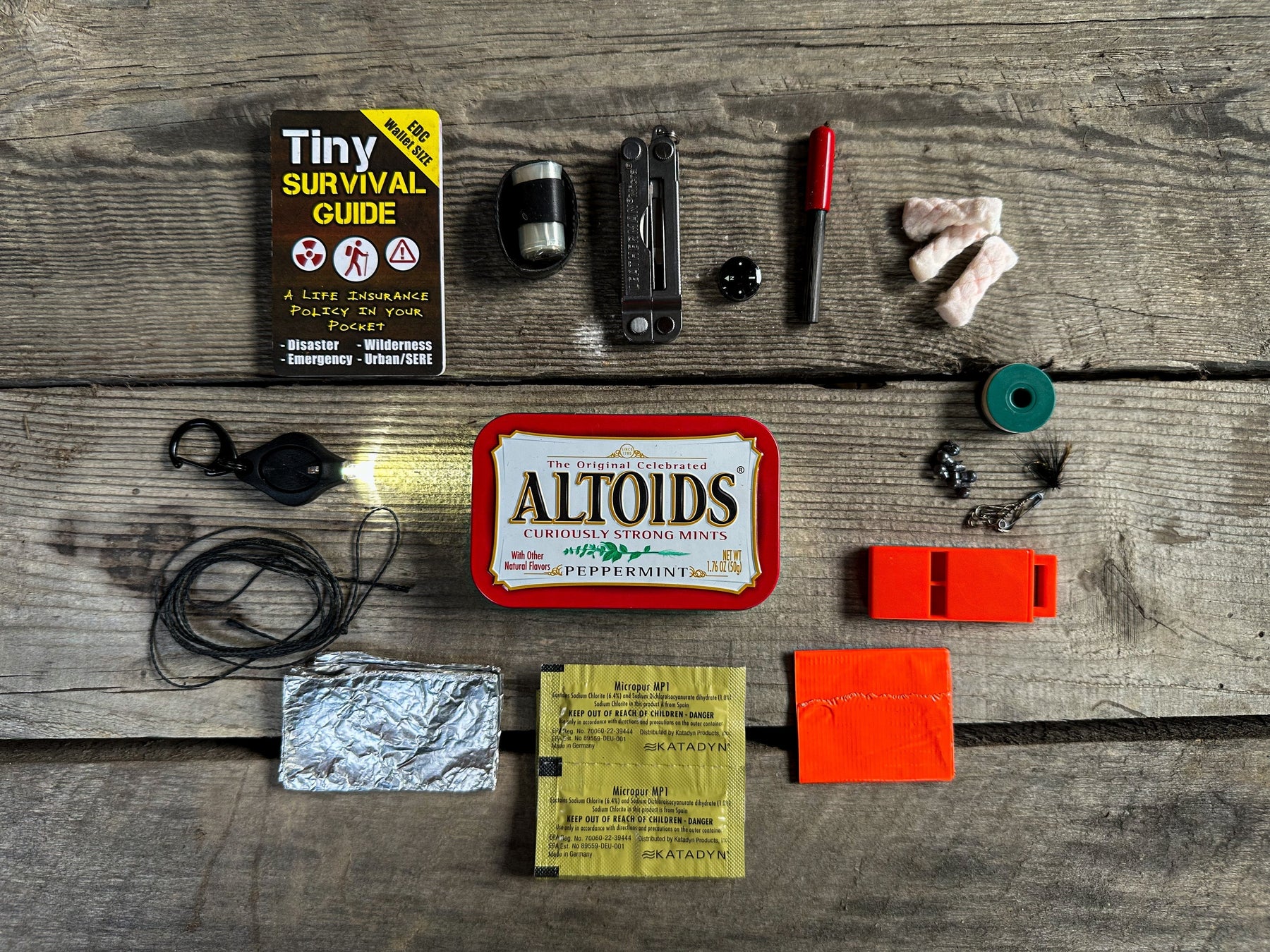
Altoids Survival Kit: How to Build the Ultimate Pocket-Sized Survival Kit
A Tiny Tin with Big Potential
We've all heard the phrase "It's better to be safe than sorry." But how can you stay prepared without hauling around a heavy backpack everywhere you go? Enter the Altoids survival kit a compact, pocket-sized kit that could be the difference between a minor inconvenience and a life-threatening situation. In this guide, you’ll learn exactly how to transform an everyday Altoids tin into a powerful mini survival kit, perfect for hikers, campers, travelers, and anyone who wants to be ready for the unexpected.
Why Carry an Altoids Survival Kit?
A thoughtfully packed Altoids tin can hold dozens of essential survival items while staying small enough to fit in your pocket. From navigation tools to fire starters, this kit offers peace of mind and practical solutions when you need them most. Lightweight and discreet, it's an easy way to add an extra layer of preparedness to your everyday carry (EDC).
Essential Items for Your Altoids Survival Kit
1. Mini Multi-Tool
A high-quality mini multi-tool can handle critical tasks. Choose a trusted, name-brand version rather than a cheap knockoff.
2. Small Compass
A button compass helps keep you oriented, but verify its accuracy often — these tiny tools can sometimes drift.
3. Ferrocerium Rod
Choose a small, handle-less ferro rod to save space. Add a rubber grip if needed for easier use.
4. Fire Starters
Compact fire fuel starters (preferably dried) help ensure your fire-making supplies won't leak or fail.
5. Fishing Line and Hooks
Lightweight and versatile, fishing gear can help you gather food with minimal effort.
6. Whistle
A loud whistle can signal for help without draining your energy like yelling does.
7. Duct Tape
Perfect for temporary repairs, first-aid bandages, trail markers, or even holding shoes together.
8. Water Purification Tablets
An excellent choice over a filter when space is tight. Tablets can eliminate more contaminants and weigh less.
9. Aluminum Foil
Multi-use: boil water, cook food, signal for help, or craft a small container.
10. Water Bags
Use these to collect water before purifying it. They pack flat and take up minimal space.
11. Wire or Kevlar Cord
Strong and durable, it can serve as cordage for shelter, gear repairs, or even trap building.
12. Small Survival Guide
A mini guide or cheat sheet can be life-saving, especially when under stress. Bonus: it can also be burned as tinder in emergencies.
13. Large Rubber Bands or Inner Tube
Secure the tin and double as emergency fire-starting material.
 How to Pack Your Altoids Survival Kit
How to Pack Your Altoids Survival Kit
Start with flat items on the bottom, duct tape, aluminum foil, water purification tablets, and a flat whistle. Next, place the ferro rod along one edge; other items will help hold it in place. Fit round items like the compass and fishing line spool into the rounded corners to maximize space. Then, fill in the rest, pushing softer items (like tinder) on top to compress everything snugly when the lid closes.
For extra organization, tape items like cordage to the inside of the lid so they lift out easily.
Beyond the Contents: Using the Tin Itself
Don’t overlook the Altoids tin. You can use it to:
-
Boil small amounts of water for sterilization.
-
Reflect sunlight as a signaling device by polishing or scratching the inside of the lid.
-
Make char cloth for easier fire starting. Fill the tin with cotton scraps or natural materials, heat it in a fire (allowing smoke to escape), and you'll end up with an excellent spark-catching tinder.
FAQs About Pocket-Sized Survival Kits
What do you put in a mini survival kit?
Focus on essentials: safety, signaling, fire, water purification, and food procurement. Your kit should help you stay warm, hydrated, and found.
Why use an Altoids tin?
Originally popular among outdoors and bushcraft communities, these tins are tough, lightweight, and easy to repurpose. Historically, tins held tobacco, char cloth, and other small essentials — the modern Altoids tin simply continues that tradition.
Why do some survival kits include condoms?
Condoms can carry up to a gallon of water when carefully filled and tied. They also protect matches, tinder, or other small items from moisture. Personally, I prefer flat water bags for easier packing.
How should a mini survival kit be used?
A mini kit is a backup — not your primary survival solution. It works best as an EDC option: easy to carry in your pocket, glove box, tackle box, or day pack, ready to support you in unexpected situations.
Final Thoughts
A well-built Altoids survival kit is a testament to the power of preparation. By taking the time to thoughtfully pack and carry one, you're investing in your own safety and self-reliance.
If you’d like to learn more about building practical, field-tested survival skills, check out my book Extreme Wilderness Survival — it goes beyond gear and into the mindset and techniques needed to thrive outdoors.
Stay prepared, and get out there confidently.




Leave a comment